24 hours after landing in Japan on the first Sunday in August, much was right in the world. Having that morning traveled from Tokyo up to Sendai for Tanabata, the final of Tohoku’s “three great festivals” I’d yet to attend, I was peering down on the city from the ruins of Aoba Castle, waiting for a fireworks show to start.
A thicket of brush covered the hillside that separated me from the food truck park at ground level, where the vast majority of revelers were gathering.
Which is to say I could see them, but couldn’t hear them: As had been the case in the Zelkova billows covering Aoba-dori during my walk westward from the city center, the locust symphony was deafening. I wondered if the hanabi would even boom, until the first one did.
As the embers came crashing down to earth, having lit up the sky not over the heart of Sendai but instead directly over the equestrian statue of Date Masamune, so too did self-doubt run down my brow with the sweat of late summer.
For one thing, my brilliant idea—that I would get to higher ground while the plebs watched the show from the river—wasn’t so smart at all; no fewer than 1,000 other people had scaled the former fortress right alongside me.
Then, there was the wisdom of coming to Tanabata at all. Sendai is a city I love more every time I visit, and I did want to practice photographing fireworks, which I hadn’t done in over a year (and which I hadn’t done well in much longer than that).
On the other hand, Tanabata is not a matsuri in the way the other two “great” Tohoku ones—Akita Kanto and Aomori Nebuta—are. There’s no parade; there are no floats. There are merely lanterns hanging from awnings over the city’s main shopping arcades, and over the entrances of several buildings around town.
And the fireworks—which, judging by Date-san’s iron gaze, did not amuse him in the slightest. I wanted to ask the locusts what they thought, but they’d stopped singing by the time I headed back down the mountain.
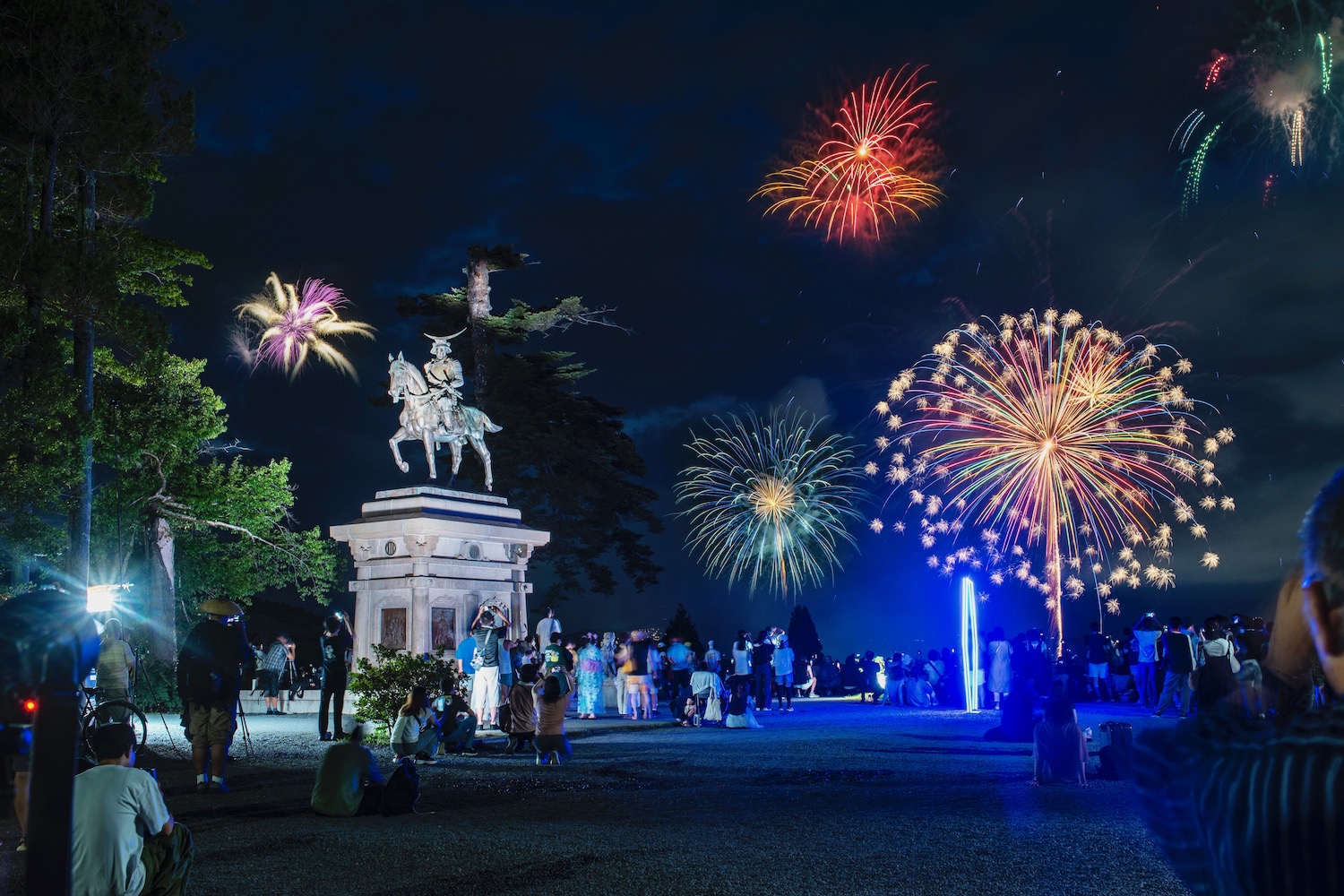
Point Nemo is a coordinate in the South Pacific Ocean that is the farthest point from any landmass on the planet. While it does not coincide with the deepest point of the sea—as cool as that would be—is is part of the so-called Midnight Zone, the portion of the ocean floor so deep that light literally never reaches it.
I had spent Tuesday drifting in and out of consciousness—I hardly left my Sendai hotel room at all. By the time the inclination to explore returned, I raised the window shade and realized the sun had long since set. I couldn’t remember the last time I had wasted a day so soon—or, come to think of it, that I had wasted a day at all—during a trip to Japan.
Waking up the next morning didn’t immediately help matters, even if I was curious upon entering 7-Eleven to see what new songs had made their way into the Muzak rotation. 1, 2, 3, 4, I hummed under my breath. Come on baby, say you love me. I hadn’t heard that one (the real version, this is) in decades.
You see, I would be spending at least half the day on a train. Well two trains, technically. But the point was that in addition from being maybe-dubious on its face, my Sendai sojourn had been logistically unwise, requiring me not only to return to Tokyo, but then spend almost three additional hours onboard a Nozomi Shinkansen.
Arriving at Kyoto Station—because of course I was bound next for my former hometown—I felt torn. Part of me wanted to spend a second consecutive afternoon half-asleep. There’s nothing I haven’t seen in this city; the rest of my trip would be busy enough, as it was.
The other half of me had heard some well-meaning (but dumb-sounding) dudebros invoking ikigai during my brief two-stop trip on the subway Karasuma Line. And that half won.
To be sure, the loose and somewhat aimless plan I’d weeks ago laid out—I’d check into my hotel and, before walking up Sannenzaka to the Seiryu Hotel’s K36 rooftop for sunset cocktails, stop at the quirky THISISSHIZEN ice cream shop for what was purportedly Japan’s most beautiful soft serve—didn’t seem to hit any of the four main points of the second-most cliché Japanese buzzword.
On the other hand, I headed toward Kiyomizu-dera just as the light was hitting the right way, my belly full with beautiful (but tasteless) ice cream. Dusk beckoned, inspiring me first to photograph the scene and then myself in the most golden sort of golden hour.
Descending into Gion after what had been a less than memorable sunset (and an even more mediocre drink), I remembered that what I have always loved about Kyoto was the quotidian moments, like watching Geisha entertain clients inside obanzai restaurants from over the Kamo River. What I’ve always been good at is calling the attention of others to it, in this case using a zoom lens and a steady hand.
I’d only managed to conjure half of ikigai in the few hours since I arrived, but it had been enough to change my perspective. I wasn’t marooned in Point Nemo; I hadn’t been sucked down into the Midnight Zone against my will.




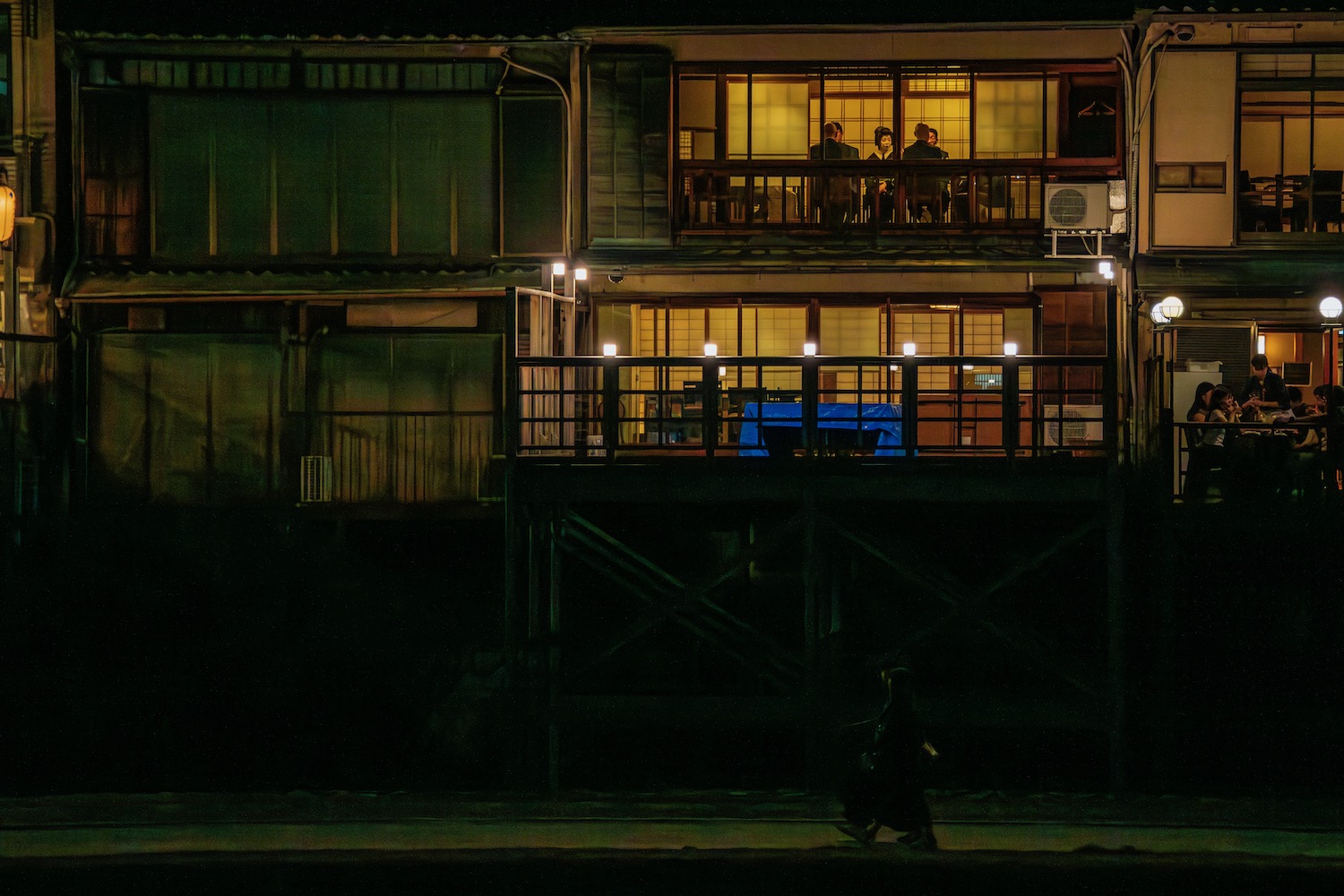
I’d originally thought I might spend the next day eating soumen at Kifune Shrine (which I’ve already eaten and where I’ve already been), but instead set my sights farther afield: To the seaside town of Obama in Fukui prefecture.
But rather than heading straight down to the historical center, which is apparently sometimes also known as “Nara by the Sea,” I hit up a trio of temples on the way: Myotsu-ji, which is famous for its five-tiered pagoda; Mantoku-ji, which is famous for its landscape garden; and Jingu-ji, which is famous for the asymmetrical architectural style of its main hall.
Actually, famous is the wrong word. No one comes to the temples of Obama, apart from the staff who sell tickets, the monks who live there and the dozen or so Americans who might’ve come here for novelty when a man named Barack was our president.
My recollection of these sacred sights has blended together—it was sickly hot and humid, even considering how little I was walking on account of having rented a car. My most vivid memory involved seeing a wayward red leaf on the otherwise emerald maples trees, and fantasizing about autumn in a way that bordered on obscenity.
Yet the only thing more absolute then my craving for fall was nature’s complete rejection of it. So green were the aforementioned leaves, even more than halfway through summer, that it was credible to posit autumn might not ever come again.
The dragonflies flapped their wings in agreement; some cicadas sang to echo. Even the runoff in the drains seemed to meander at a rhythm that suggested endless summer. The only collective that even so much as suggested a continuation in the cycle of seasons was a school of koi in a small pond, and I suspect that was primarily because I scared them so much: They had no choice but to swim in circles.
Finishing up at Jingu-ji before driving down to the waterfront, I read a pamphlet the monk who took my money—this temple is so obscure there’s only one person working there, and he’s on double duty—had given me. Apparently wakasa, which is the alternate name for Obama, was Korean in origin.
After driving off, I sat down for a set lunch spotlighting mackerel at a restaurant overlooking Obama’s port area, served by a robot that evoked a more primitive version of the titular character in Apple TV’s Sunny. Once I was finally nourished and I hydrated, it dawned on me that I wasn’t craving autumn’s slow dance to death at all.



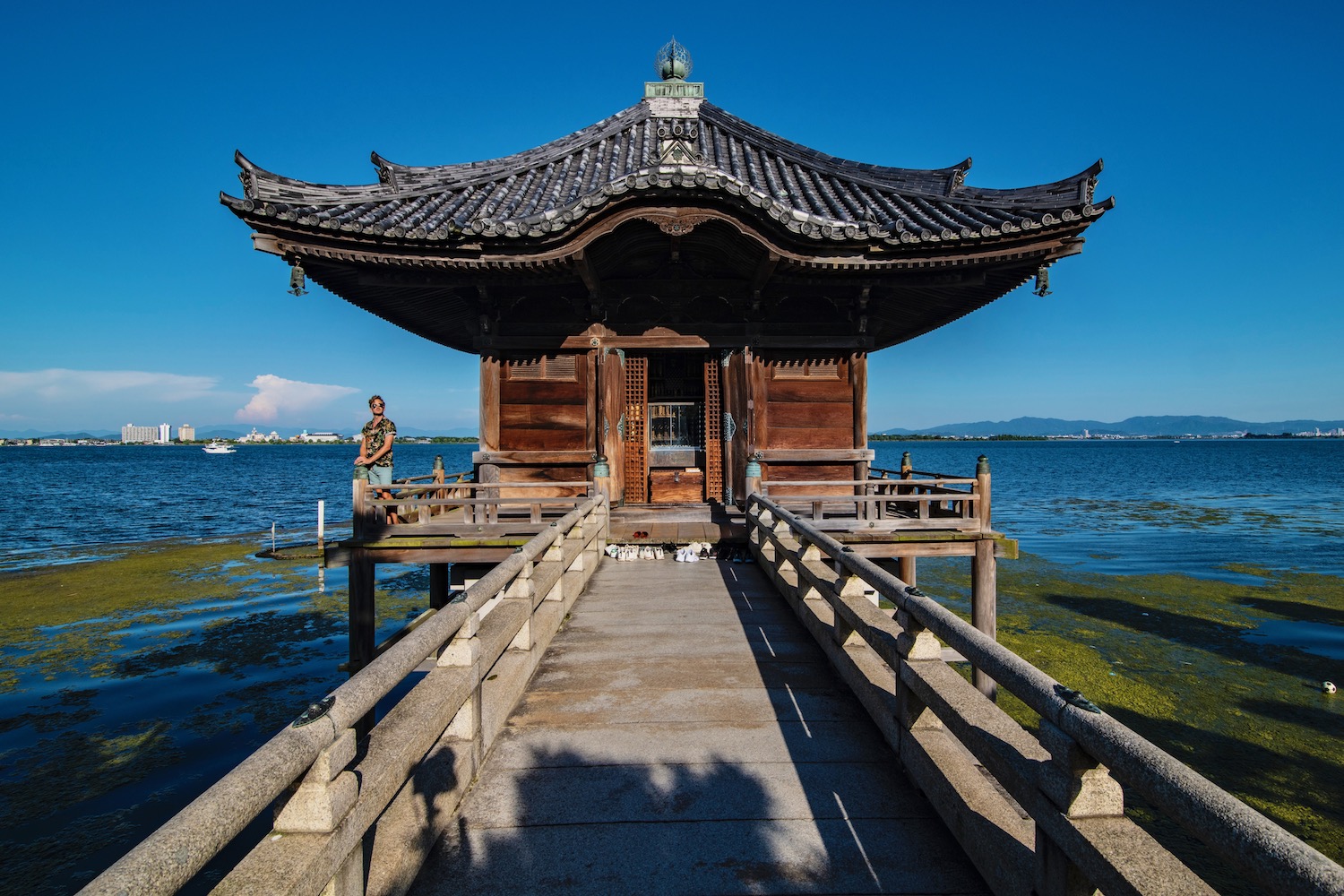


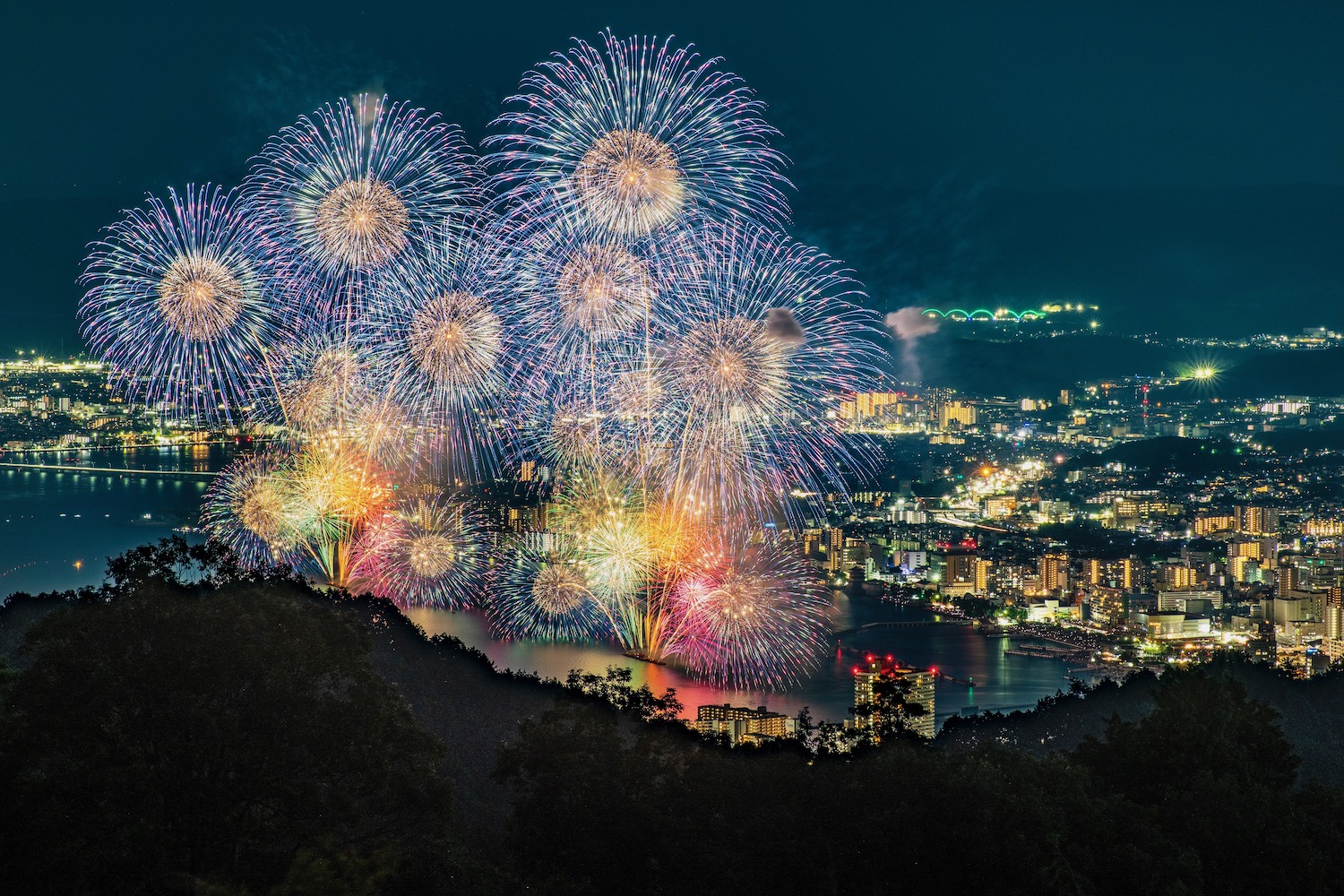
I realized I didn’t write anything about the Biwako Fireworks Festival in the previous section, and there’s a good reason for that. While the hanabi themselves were excellent—maybe the best I’ve seen in my life—the entire experience was a hot mess. I’ll write about this in a later post, but for the purposes of this essay, the photos I’ve shared here tell a much more palatable story than the one I lived.
For the purposes of this essay, you see, we’re going to travel from Nara by the Sea to the actual Nara, where I returned for the third time in just over a year.
Which was fitting: Just as Nara’s deer remind me of my father’s stubborn pride in our home state of Missouri, which is at least in contention for the least remarkable of America’s united 50, so too do I keep coming back here because I never quite seem to get it right, photographically speaking.
(That, and the Lantern Festival. Which, I learned only upon arriving was not some ancient tradition, but rather a random, feel-good idea someone had had a quarter of a century ago which, in the context of Nara’s millennia of history, might as well have been five minutes ago. But I digress.)
This was probably my 10th trip to Nara overall, but I saw something within the first hour of it that I’d never seen here: Fawns, hundreds of them on a small plot of grass just south of the Nara National Museum.
I’m not sure if I’d been able to siphon off the freshness with which they doubtlessly see the world, or whether I’d just been glad to have had an opportunity to bust out the shika-themed happi I’d bought online.
But I walked away from the scene feeling invigorated. Which is just as well: I was planning to scale Wakakusayama for sunset, and the only way to do that without a car is to go the long way.
So hot and humid was the air beneath the forest canopy—which managed to trap in not only the requisite insect karaoke session, but also every bit of heat and humidity—that my lip balm literally exploded in my shorts, (probably) ruining them with a greasy smudge that I haven’t as of yet successfully scrubbed out.
I summited the mountain about half an hour after setting foot onto the dusty trail feeling less than optimistic. Although superficial indicators—cloud-cover percentage; humidity; clear sky at the horizon—seemed to portend a good sunset, the actual color in the sky was less than vibrant.
As a result, after photographing some bucks and does who were photobombing a soon-to-be-married couple, I started making my way down the mountain. Soon, the honden of Todai-ji came into view, and so too did the scaffolding covering Kofuku-ji.
But then, something even more spectacular appeared: A burst of color, first a cotton-candy pink, then an orange like the torii-colored stripe on my happi, then a blazing red that seemed as if it was precisely on the opposite side of the color wheel from the fluorescent chartreuse of the mountain’s namesake grass.





Waking up before the crack of dawn the next morning was thrilling, and not just because the pedestrian promenade leading to Ukimi-do pavilion (which, just hours before, had been as packed as Shibuya Crossing on account of the lantern festival) was completely empty.
It felt like I was literally the only one in the city, apart from whatever horrifying creatures were waking up around me.
There was a circuit of sound: Shriek, bellow, splash—always in that order. But never coming from the same direction, or really even a direction at all. It was just emanating, like the way that air is just always there.
I wish I could say that the sunrise I woke up before 5 to see had been as memorable, but…well, it hadn’t been at all. The sky grew steadily lighter, this much is true. But although the sky was completely cloudless, it was also totally white. More than white, in fact; as the light appeared, it seemed to suck color from everything it illuminated.
The vibrant red of the daruma at Osaka’s Katsuo-ji later in the day was a shade I needed to see, never mind the fact that the sky had saturated to somewhere between azure and sapphire by that point. I picked up one for Eriko—who, amid the chaos leading up to my trip and the existential self-doubt that had kicked it off, I’d nearly forgotten to tell that I would be in Japan at all.
I presented it to her within the chain coffee shop she’d chosen for our impromptu meeting. (Her schedule, understandably, had not been open enough for anything more significant.)
“I was going to go to Hiroshima,” she told me, after having reminded me that it was nearly the beginning of the Obon period, “but it’s not safe.”
She proceeded to explain that many Japanese people interpreted the previous week’s tremor in Miyazaki (which, within the international media at least, had seemed like alarmist clickbait) as a genuine indicator of a cataclysmic mega-quake to strike in a matter of days.
“The 14th, specifically,” she continued, pouring the slightest bit of milk into her coffee cup, whose maroon-navy-kelly paisley matched her dress both in pattern and in color scheme. “If you’re near the ocean, make sure to request a high hotel room and stay inside it.”

In spite of how ominous (and serious) her warning had been, our meeting proceeded much as all our others the preceding decade-plus had done. Each of us telling the other about love, life and hopes for the future, and carrying on about all of them as if no time had passed at all, as if she wasn’t nearing 50 and I wasn’t nearing 40.
Eriko also mentioned that she feared another pandemic would soon strike, though she didn’t articulate why in factual terms. She mentioned it only briefly, but then reprised it just seconds before I got out of her car at Nishi-Akashi Station.
“See you again in January,” she said with a smile so wide it belied that darkness that had cropped up at various points during our meeting. “If the borders aren’t closed by then.”
From there I was off to Himeji, where I had ostensibly planned to watch the sunset, but hadn’t identified a proper viewpoint; I was only steps from the station by the time the sun disappeared behind the city’s modest skyline.
Thankfully, having chose first to be guided by sight and then by Google Maps, I managed to ascertain that Kyoguchi Station along the obscure JR Bantan Line was elevated in a precisely parallel line from the fortress, behind which the sky (which was initially as colorless as it had been in Nara in the morning) began to glow an orange that evoked Tang of all things.
Arriving back to Nara, a smiled glued to my face after having gotten the shot I wanted—a better shot than the one I wanted—a notification as black as the night sky above me appeared on my phone’s screen.
Japan’s Kishida cancels Central Asia trip, it read, after scientists urge preparations for a possible ‘megaquake.’
Yet as I walked around the periphery of Sarusawa Pond toward my hotel, I noticed an old man tucked into the corner, facing away from all the passers by, singing “What a Wonderful World” precisely in the style of Louis Armstrong, accompanied by his own portable karaoke machine.
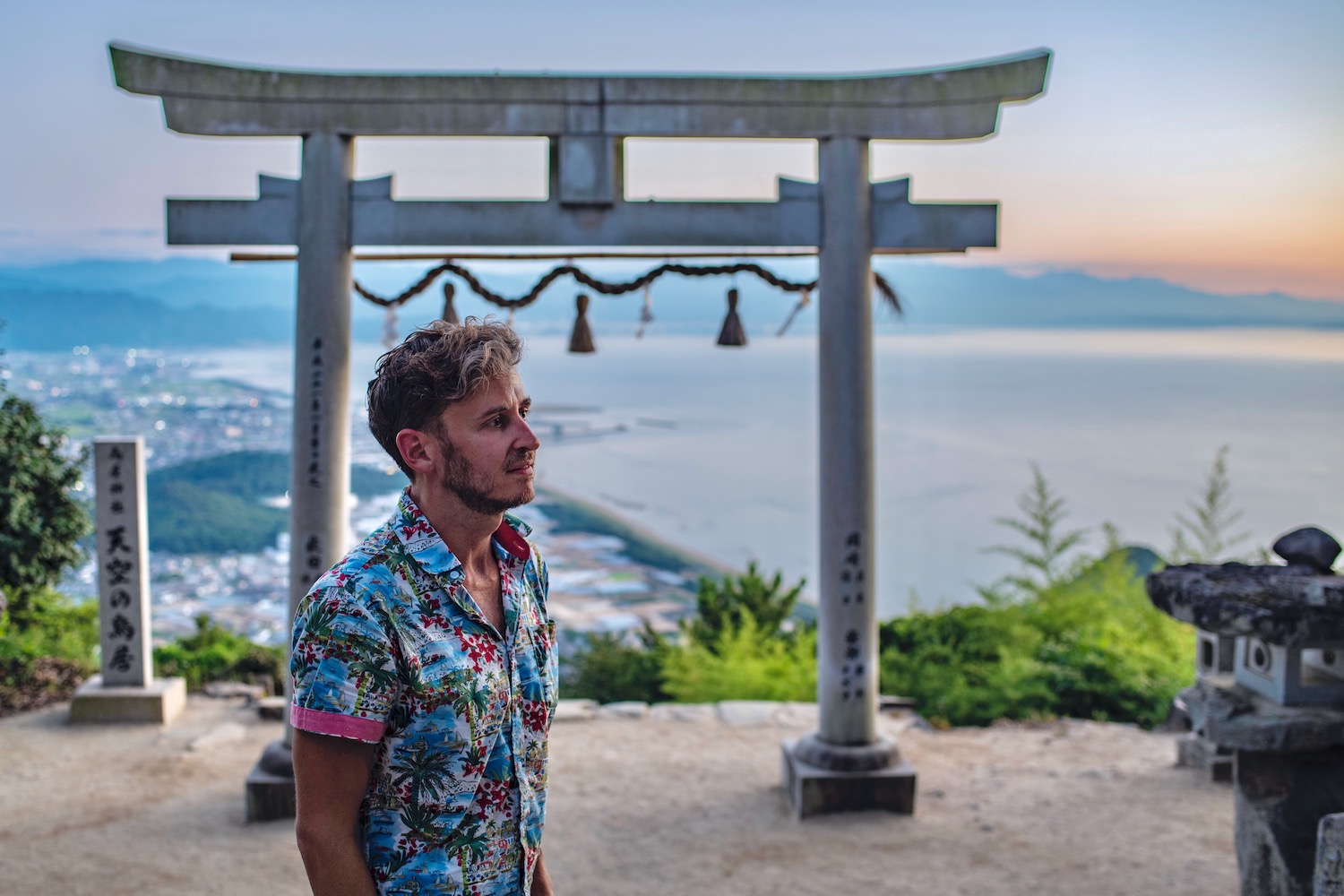
By the time I made my way over the Seto Ohashi Bridge Sunday morning, I had well and truly reclaimed the narrative of my trip, like Kamala Harris taking back Trump’s seemingly assured victory, in about as few days no less. I had not only clinged onto the principles of ikigai, but was living them almost without effort. In a way, at least as far as I was concerned then, it didn’t matter what else I saw or did the rest of my trip.
But of course it mattered for me, just as it matters for Kamala—and for the world—that she win in November.
After having been delayed to Okayama (and, thus, nearly to Takamatsu) by Obon-related congestion along the Tokaido-Sanyo Shinkansen, I nearly failed to reach my final destination—the “sky gate” of Takaya Shrine—on account of a road closure.
Once I finally did get there, a few things occurred to me. First, that just because you’re physically capable of doing something, doesn’t mean you should do it. I raced up to the summit (a hike the placard told me would take 50 minutes) in just 30, albeit carrying 30 pounds of camera gear on my back, the lower part of which spasmed and is still sore.
As fas the view from Tenku-no-torii? It was fabulous, even though the sunset had been forgettable compared to the previous two. I’m not sure walking down the sketchy path nearly in the dark was worth the danger that could’ve befallen me.
And not just from the threat of slipping, or the various creatures who made their presence in the forest known from time to time. No, there was a young man at the top I encountered at the top whom I thought might kill me. He was a nerd, the type I might’ve assumed was hikikomori if he hadn’t been out in the real world.
It wasn’t that he was likely to kill me; it just would’ve been easy, given the hellish wilderness that separated that so-called heavenly shrine from the earth below. He was just awkward enough—if I said the wrong thing, he could’ve snapped.
“Kii o tsukete,” I advised him to be careful as I passed him on the way down.
He replied succinctly—”Abunai desu“—though I wondered whether he was characterizing the descent or himself as dangerous.

My presence in Takamatsu had itself been only somewhat intentional. When I first started planning this trip at the end of 2023, I’d booked two nights in the city not because I wanted to revisit it (although I did want to revisit it), but just in case I couldn’t get a hotel in the place I was actually bound for.
The city in question, of course, was Tokushima; the event was the annual Awa Odori festival, which sees so many visitors come to the city that its relatively few hotels book out months in advance. I ended up being lucky enough to get a room, though I kept a night in Takamatsu because after all, I did want to revisit the city.
In particular, I wanted to walk for a third time through Ritsurin Koen, which in spite of not being known officially among Japan’s “great” gardens is doubtlessly one of them. The idea was that I would go first thing in the morning before setting off for Tokushima and the main event.
The idea, and the execution: Though there was a few scattered elders here and there, especially at the garden’s famous viewpoint, I more or less had the place to myself, which was what I wanted. This allowed me to self-time a portrait of myself on the Engetsu Bridge, and sprint down the stone steps and onto the bridge fast enough not to disturb anyone.
It’s not easy, I thought to myself as I panted on my way back from a round of shots, thinking once again back to ikigai. I just make it look easy.




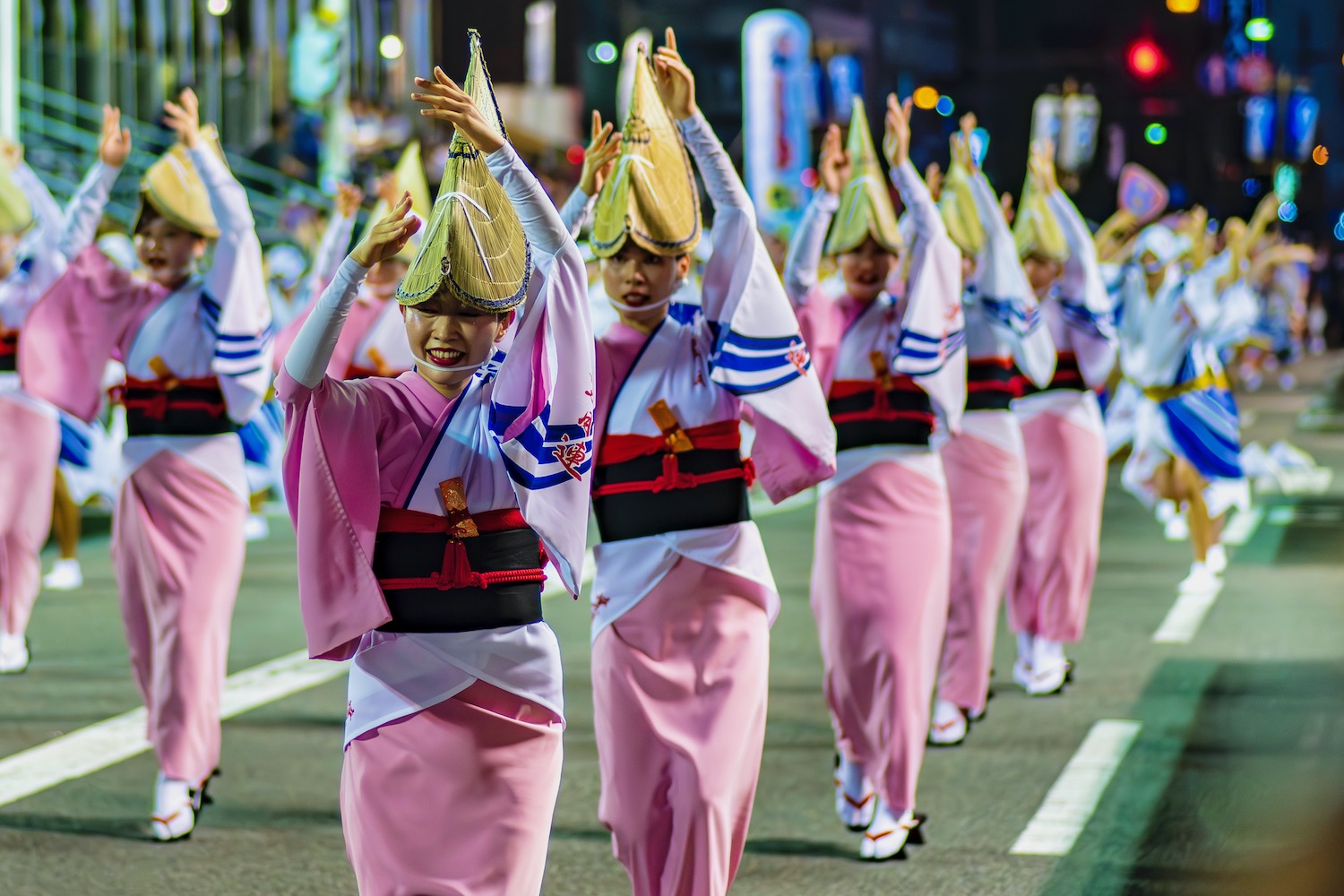
The first thing I saw upon exiting Tokushima Station was Hotel Clement. I’d stayed in this hotel, which is trapped in the 80s in the most charming possible ways, during my first (and, up until August of 2024, only) trip to the city nearly eight years earlier. Given that much of what I’d done back then was outside of the city, Hotel Clement was Tokushima to me.
Hotel Clement and the Awa Odori Kaikan, where I first hatched the idea of returning one day to see the actual festival. Though there were other ideas I needed to execute before that, given where I was in my career back then.
This time, to be sure, I returned to the building that houses the performance hall, but instead of staying at ground level went up to the 5th floor. Here I boarded the Bizan Ropeway, which took me to to the top of the mountain of the same name. I hadn’t managed to take in a panorama of Tokushima the last time I was here; I wanted to fix that.
I wanted to zoom out before I zoomed way in.
Descending to ground level, I chose to spend the remaining daylight hours walking back and forth through the various rows of food stalls, both take some practice shots (not just of the stalls and their food, but of performers relaxing before the festivities began), but also to drink: My nerves were slightly shot, and a couple of highballs was an easy way to calm down.
As I began to breathe more easily, I reminded myself of just how different both my life and career had been during my first swing through Tokushima. Though I’d been on a press trip, this site didn’t exist yet; I’d been invited because of me Japan-related content on its progenitor blog.
I hadn’t yet committed to leaving America after Trump won, though I had a feeling I was going to do so; that move ended up being what empowered me to return to Japan often enough to spin off a dedicated site about it.
In so many ways, my life was on the cusp of becoming what it is now: Tokushima was the cusp.
And so by the time the first dances began, and I snapped the first few dozen of what ended up being more than 1,000 raw images, I was of two minds.
On one hand, the spectacle and scale of the festival was far beyond what I expected, even after having seen four different (and amazing) Japanese festivals last summer, the relative disappointment of Tanabata this year notwithstanding. I’d been waiting almost eight years to look upon this with my own eyes, to walk the streets where it was happening with my own feet. I never wanted it to end.
But I had been waiting almost eight years: Working almost eight years; strategizing and speculating for almost eight years; planning and executing for almost eight years.
I was at Point Nemo, deep in the darkness of the Midnight Zone, but also so close to the sun I thought my wings would melt.






